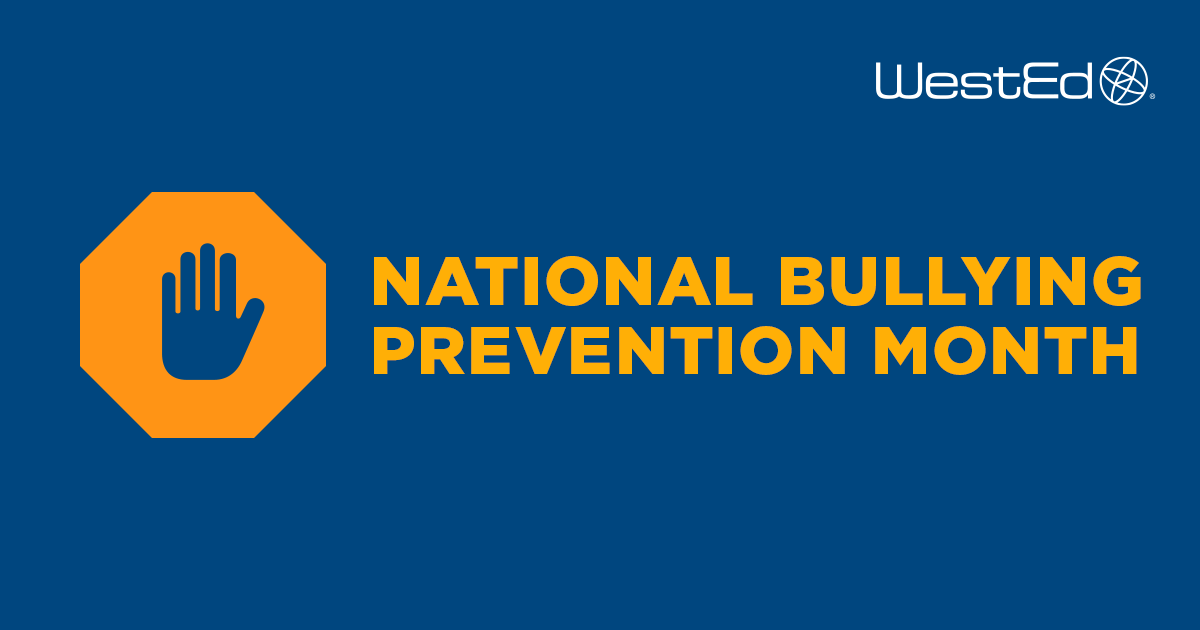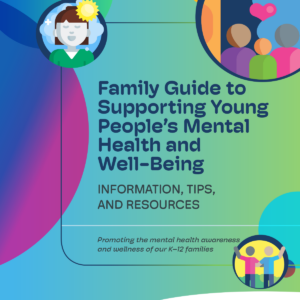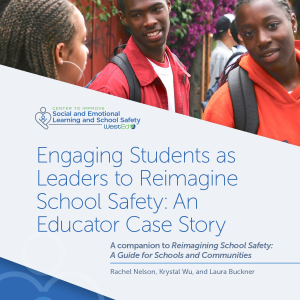National Bullying Prevention Month: Interview With Dr. Trevor Fronius of the WestEd Justice & Prevention Research Center
Posted on

Students deserve to attend schools in which they feel safe and supported. As such, bullying prevention is an essential component of any school safety initiative.
 In observance of National Bullying Prevention Month, WestEd checks in with Trevor Fronius, a Senior Research Associate with the WestEd Justice & Prevention Research Center. Fronius works on research and evaluation projects related to criminal and juvenile justice systems, violence prevention, school safety and climate, and other prevention areas.
In observance of National Bullying Prevention Month, WestEd checks in with Trevor Fronius, a Senior Research Associate with the WestEd Justice & Prevention Research Center. Fronius works on research and evaluation projects related to criminal and juvenile justice systems, violence prevention, school safety and climate, and other prevention areas.
In this Q&A, he describes the state of bullying before and after the COVID-19 pandemic—and what school communities can do to address it. The Q&A picks up from a 2019 blog post Fronius coauthored with Darius Taylor, Current Trends and Promising Practices in Bullying Prevention.
Before the COVID-19 pandemic, had the rates of bullying been on the decline?
In 2019, nearly one of every four students (22%) experienced bullying of some form over the course of the school year. Sadly, only 46 percent of those students actually reported the bullying to an adult, and that number is even more drastic among Black students (61%). While these numbers are simply unacceptable, students and schools across the country were experiencing a decline in overall bullying rates compared to the prior decade (28% in 2009).
How did remote learning impact rates of bullying?
Students were exposed to greater levels of potential electronic bullying—16 percent of schools reported cyberbullying as an issue occurring at least once a week in the 2019/20 school year—while experiencing tremendous social isolation and lacking access to in-person social-and-emotional learning and development.
As students returned to classrooms, schools were met with increased student behavioral problems, including student violence and bullying. In a May 2022 School Pulse Panel survey, for example, more than 80 percent of schools reported that the pandemic “stunted behavioral and socioemotional development” among students, and 37 percent reported that bullying increased due to the pandemic or other reasons. Undoubtedly, we will see these numbers bear out as we gather more data from students in the coming years.
What can school communities do right now to eradicate bullying?
It is imperative that we equip students, families, and school staff with the tools and resources they need to address the social-and-emotional learning and development loss in recent years and bolster support for our children who are at an increased risk for experiencing bullying.
Resources to Inform Bullying Prevention Initiatives
- What Characteristics of Bullying, Bullying Victims, and Schools Are Associated With Increased Reporting of Bullying to School Officials?
- California Safe and Supportive Schools—Harassment and Bullying
- Bullying and Disability: Student Survey Analysis
- California Safe and Supportive Schools—Physical and Emotional Violence Victimization
Follow Us on Social Media
Join us on X (formerly Twitter), Facebook, and LinkedIn to discuss how your state, district, or school works to prevent bullying and ensure schools are safe spaces for students to learn and thrive.


